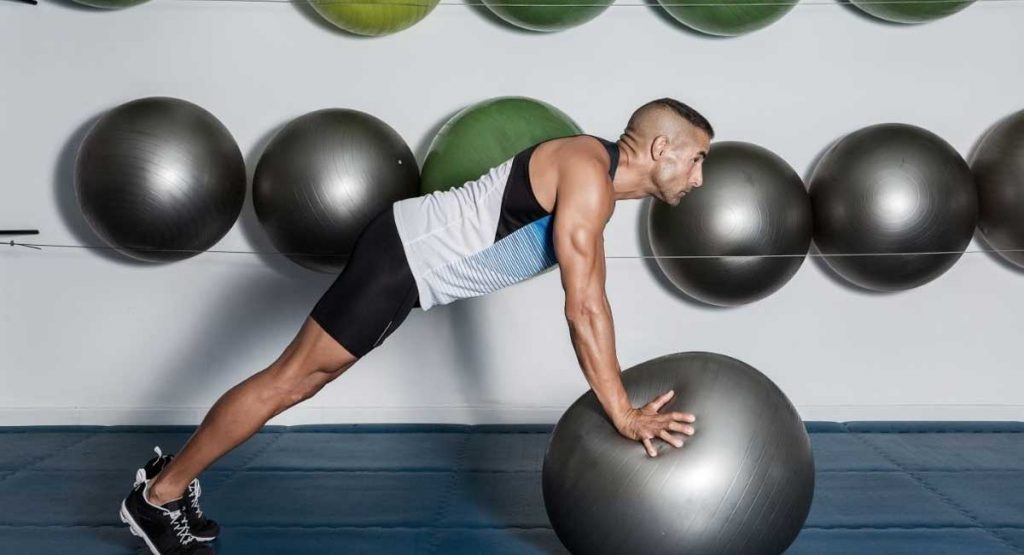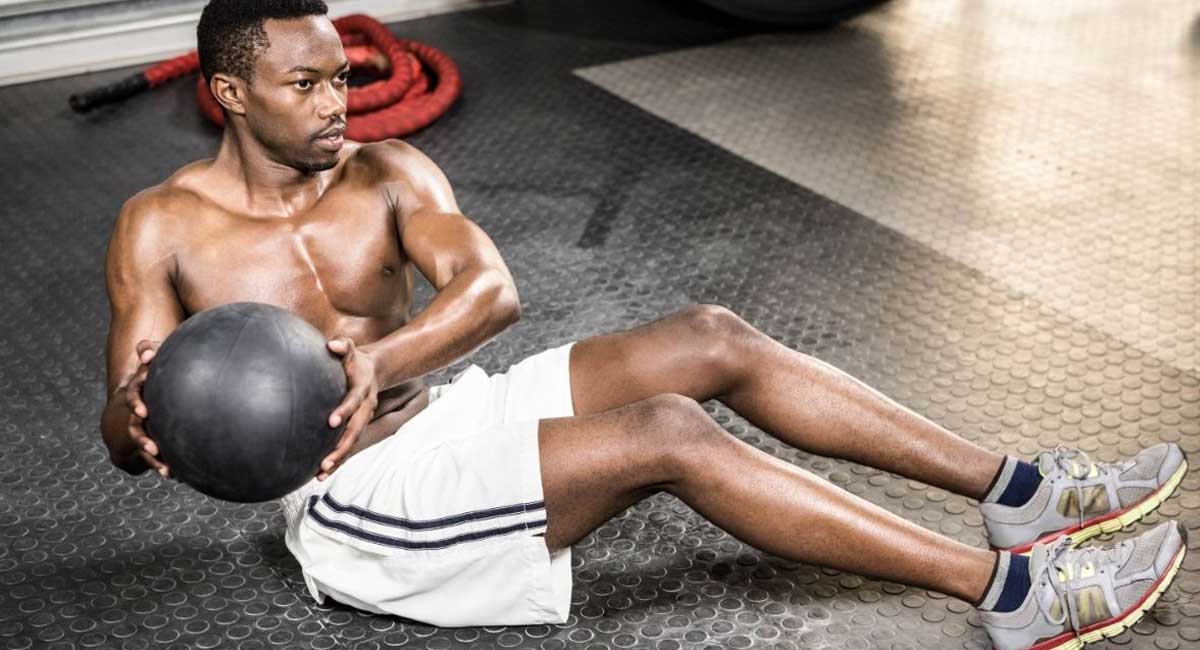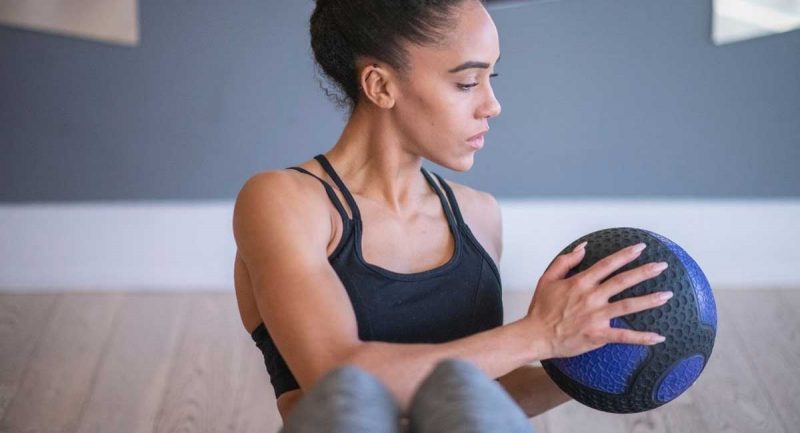Exercising with medicine balls can bring scores of benefits. They can make simple exercises more challenging (and thus more rewarding)—engaging the whole body while increasing power and agility.
Medicine balls are used in various kinds of training for various sports, from basketball and volleyball to water polo and other water sports. Medicine balls are commonly seen at the gym, martial arts studios, and in various rehabilitation programs and physiotherapy.
Some of us may recall those school-gym medicine balls from back in the day. Most people imagine all medicine balls are like that. But the term medicine ball applies to quite a few different items.
In this article, we invite you to come with us and explore the assortment of medicine balls and their purpose.
Table of Contents
How Many Types of Medicine Balls Are Out There?
It depends on who you ask. While there may be a lot of different answers out there, let’s start with the fundamentals.
Practically speaking, between size, weight, and materials, there are countless combinations of medicine balls. There are also certain types of products that are often differentiated from medicine balls, like slam balls, which we’ll cover in a moment.

If we take a more liberal approach to what a medicine ball is and isn’t, then we can break it down into eight different categories, including slam balls and wall balls.
Leather Medicine Balls
This is what most commonly comes to mind when people think of a medicine ball. These are used for ballistic training, explosiveness exercises, as well as some balancing exercises. The sizes vary from product to product—being as small as a baseball to very large, very intense exercising gear. They are usually the size of a basketball (a common version is a weighted basketball), weighing anywhere from 1-25 pounds.
By throwing them or jumping with them, the muscles build both explosiveness and strength/endurance. You can use two or more for various balancing exercises (push-ups), or keep them overhead while doing situps.
Medicine Balls with Soft Gel
These medicine balls keep the weight they are famous for, but they add softness to the game. Thus, they are easy to grip and catch, and don’t have any bounce.
They are usually made of vinyl and filled with a gel that gives them weight and softness. Some versions are intended for increasing grip power and hand strength—which is great for rehabilitation exercises.
The gels used in production often provide pliability; so, these balls are well made for in-water exercises and sports training, like water polo.
You can use them as weights in all kinds of exercises. Take a look at how you can increase your shoulder and arm strength with larger versions with these exercises.
One-grip/Handle Medicine Balls
One-grip medicine balls look very much like (and often used in lieu of) kettlebells. The difference between kettlebells and single-handle medicine balls is that the latter can usually bounce, allowing for additional exercise options. Some can also float and be used in aquatic exercises.
The handle added to the medicine ball can be a part of the ball’s diameter or attached to a whole ball. The correct handling during the exercise can add additional momentum and/or put its center of mass away from the person, adding more resistance, weight, and force needed to handle the ball.
These balls are also great for upper abdomen workouts, throwing exercises as well as many other exercises.
Two-grip/Handle Medicine Balls
Two-handle medicine balls offer tighter grip and control over a ball. The handles are usually placed on opposite sides and are meant to be held with one hand or both hands.
These balls can also replace kettlebells during exercises and, with some bounce, provide additional exercise options.
Two kinds of medicine balls fall into this category. The first is designed with two hollow parts on its sides, which form two handles. The second is an NGR ball that has two bicycle-like handles connected on each side. This design greatly changes the experience and the types of exercise that can be done with these balls.
Bouncing is not possible (or at least not very easy or as safe) with these kinds of designs.
Medicine Balls Filled with Air
Inflatable medicine balls are usually larger and have the most bounce. They are also known as balancing balls.
These balls are common accessories at gyms and training venues and can be used for various kinds of balancing exercises, power sit-ups, exaggerated/balancing push-ups, and more.
Some air-filled medicine balls can be filled with water instead, providing more weight for more strenuous work-outs.
Medicine Balls with Attached Rope
The rope adds more distance to the center of gravity and the momentum of the ball. Some balls come with a permanently attached rope, while others have a detachable cord so they can be used as traditional medicine balls.
Medicine balls with a rope can be used for various kinds of endurance and power exercises. Swinging exercises and core rotational exercises are the most popular.
Slam Balls
While some distinguish slam balls from medicine balls, they fall into the medicine ball category in our list.
Slam balls are made specifically to reduce the bounce. Their hard rubber has more weight with far less bouncing. As the name suggests, it is meant for slamming and throwing away from you. The material provides durability for these kinds of exercise while engaging the whole body for throwing, improving core strength and overall explosiveness. Head slams, lateral throws, and squat throws are some of the exercises you can do with slam balls.
Wall Balls
Unlike slam balls, wall balls are meant to be thrown at hard walls, not floors. Their limited ability to bounce and their weight is chosen for exercises that greatly improve body power and explosiveness.
The size of wall balls is greater than most other medicine balls. Its large shape engages the body in some unique position during exercise. This makes throwing more challenging and mobilizes the whole posture.
With wall balls, you can practice side throws, overhead tosses, and modified crunch throws.
Additional equipment: Rebounder
Given that most medicine balls don’t bounce very well—and the fact that most of us don’t want duplicate or excessive gear—many opt for getting a rebounder and non-bounce medicine balls.
A rebounder is a frame with a flexible net stretched over it. It looks like a small trampoline and it’s meant to bring your medicine ball back to you after a throw.
The frame’s angle can be adjusted and increased and, with some rebounders, even the flexibility of the net can be tweaked and altered.
A rebounder allows you to more quickly repeat the slamming and throwing exercises that balance agility, power and motion of your muscles.
Common Exercises and Benefits with Medicine Balls
In the following section, we will cover some of the most common types of exercises done with medicine balls. Let’s dive in.

Overhead Slam
Overhead slam is one of the most popular exercises done with a slam ball. Keep your feet at shoulder-width, slightly bent knees. Lift the ball overhead, bend at hips (hinge forward), and then slam the slam ball in front of yourself. Control is more important than power, so don’t slam it too hard. One series is ten slams.
Done best with: Slam balls 5-10 pounds and more
Benefits: Flat stomach, toned abs
Russian twist
Start by sitting on the floor. Relax your knees, feet touch the ground flat. Hold the ball with both hands. Lift your legs with the knees still flexed, then rotate your body left and right while touching the floor before changing direction. 10 reps a round.
Done best with: Any medicine ball
Benefits: Great toned abs, front and sides
Med ball Burpees
Stand with legs hip-length apart, both hands holding the ball at shoulder height. Squat and place the ball on the ground. Pressing on the ball, shift your weight to it. Jump back and enter into a plank position, then quickly jump back to squat. Finally, quickly stand up.
Done best with: Any medicine ball
Benefits: Hips and legs
Conclusion
The shape, size, weight, and other properties of medicine balls vary, but the common denominator among most is that they are used for exercises meant to improve athletic abilities or for rehabilitation.
When looking to incorporate a medicine ball into your training routine, what’s most important is first having a good understanding of your goals and then picking the right gear to help you reach these goals.
We hope this guide will help you find what you are looking for.





